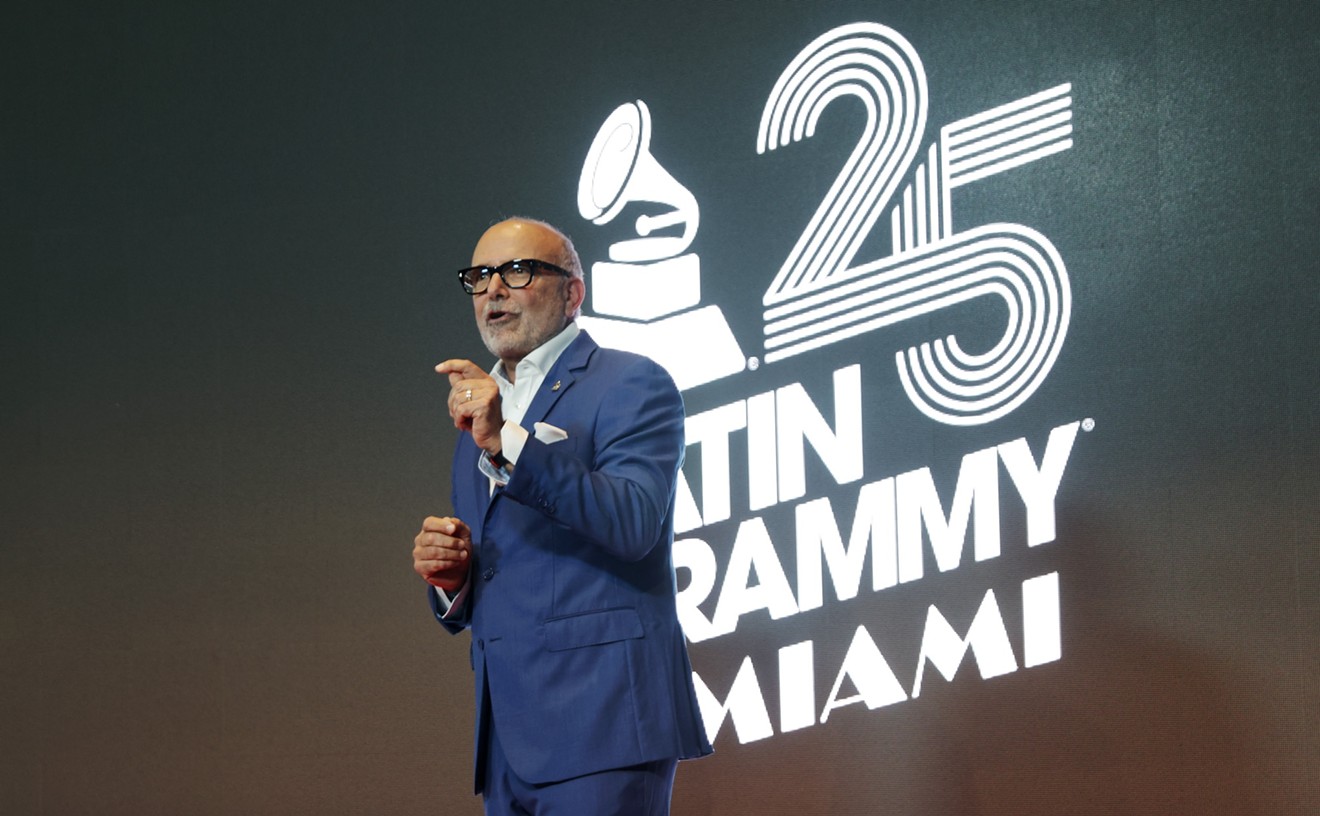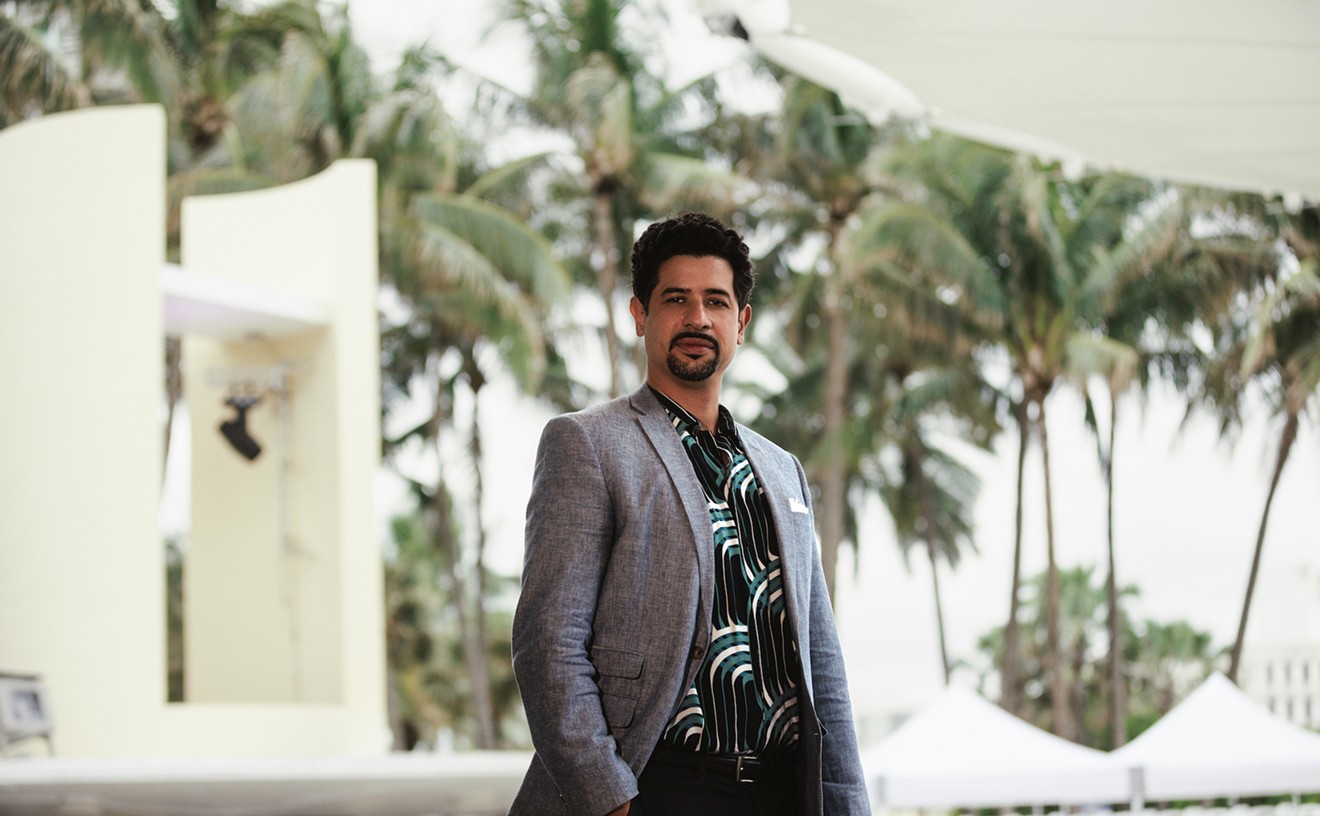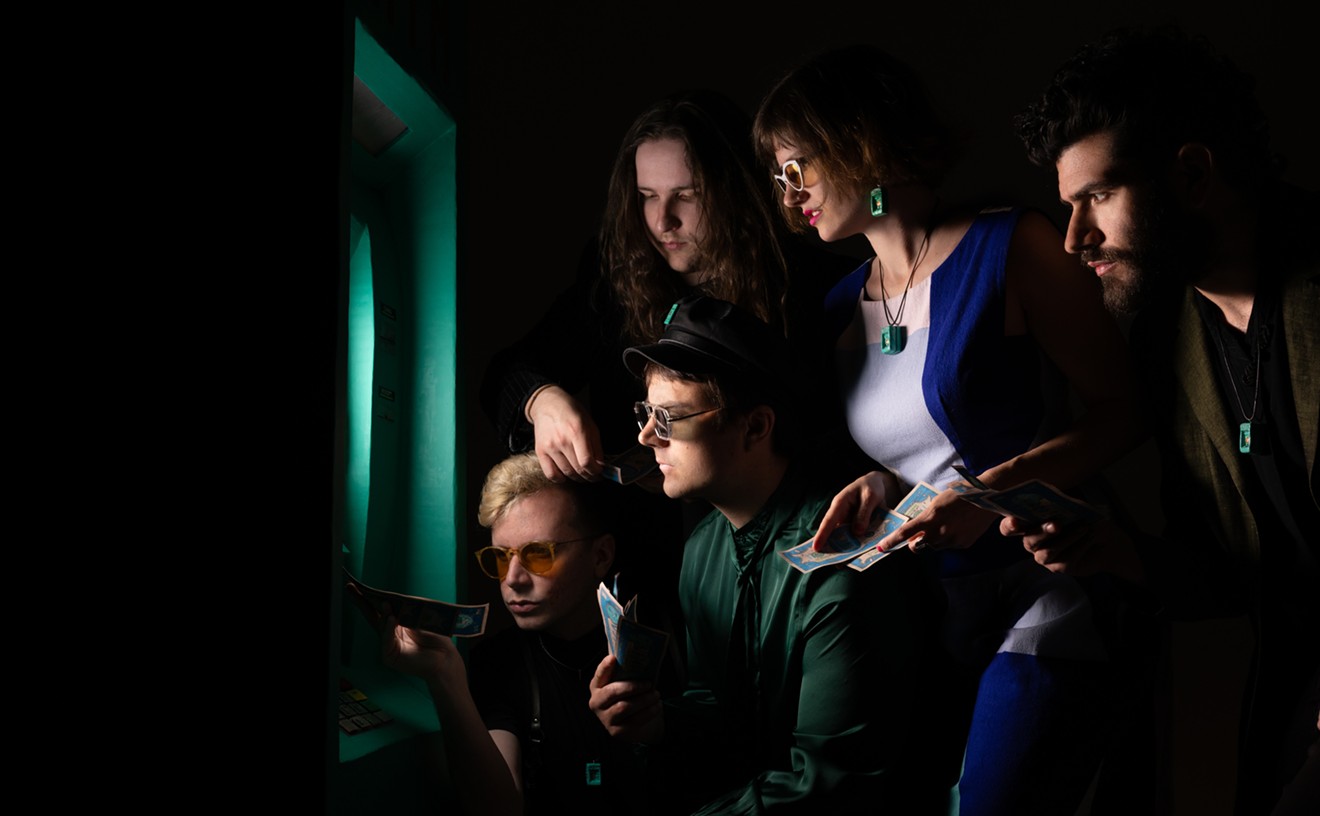I first heard Santana's version of "Oye Como Va" in the mid-Seventies, but it wasn't until 1987 that I actually heard the sounds and rhythms of Tito Puente, the timbales master and salsa pioneer who died of a heart ailment May 31. I had read an interview somewhere that year with Ruben Blades, who was touting the influence Puente had on his music. Curious about both artists, I bought Blades's critically acclaimed 1984 album Buscando America and the only Tito album in the "P" section of the Blockbuster jazz bin: Un Poco Loco, his then-latest release on the esteemed Concord Jazz label. The cover was ridiculous, with Puente sharing photo space with someone in a gorilla suit. The title, translated as A Little Crazy, was much more promising.
The music carved into the black plastic grooves, however, was anything but ridiculous or crazy; rather, it was a fusion of the kind of Fifties-era jazz I had been listening to since high school, with a musical base Santana, even at the group's mid-Seventies peak, could never adequately approximate. I had no idea if the album was emblematic of his best work, but it throttled my senses: On furious workouts and slow-paced slinkers, the piano darted throughout the shimmying pulse of the music, the horn section soared, flutes carried the melodies with a teasing playfulness, and Puente manned the timbales the way Charlie Parker played sax or Jimi Hendrix played guitar -- which is to say, like the instrument was made for him. Puente wasn't the only artist to carve out an identity on the ubiquitous percussion kit (timbalist Willie Bobo made some great recordings in the Seventies, including "Spanish Grease," which Santana appropriated, sans writing credit, on 1972's "No One to Depend On"), but Tito worked them like no one else and forever changed the way Latin percussionists would approach the seemingly simple two-drum setup.
Suitably obsessed with this gray-haired man's music, I dove as deeply into his catalogue as I could, pouring through jazz books and record bins in search of more information, more music. I learned that he was born in New York in 1920; I learned that he studied briefly at Juilliard before forming one of the key house bands at the Big Apple's Palladium, the place where Puente, Tito Rodriguez, and others made Latin music as much a part of the city's aural texture as anything going on in the Fifties at Birdland, the Village Vanguard, and other benchmark jazz joints. I learned he had recorded more than 100 albums, and I actually found a few along the way: the mid-Fifties milestones Dance Mania and Top Percussion, and more of his work on Concord Jazz, most notably Salsa Meets Jazz and El Rey, an astonishing live recording from 1984 that kicked off with a pile-driving version of "Oye Como Va."
In all of what I heard -- the Eighties-era stuff as well as the man's earlier recordings -- there was a spirit of exuberance and passion, a dedication to rhythm that seemed as genuine and palpable to me as anything that had been done on the rock and roll side of the fence by the likes of the Who and the Clash, who will probably always remain for me the standard-bearers of music's emotional force and cathartic release. The fact that I knew only enough Spanish to maybe order a beer or a pack of cigarettes meant nothing when it came to Tito's music. It spoke to me, and I heard it, simple as that. I can't talk to you about jazz theory or the context in which so many great classical compositions were made, but I can tell you that Duke Ellington and Louis Armstrong and Aaron Copland and Erik Satie all made music that continues to move me, to talk to me, music that commands my attention. Tito Puente made music that did just that. Without any grasp of what was being said by the vocalists, the music worked. It crossed the barrier of language and, along the way, became a part of my life.
To my ears that's the mark of a true genius. And Tito Puente was just that.










